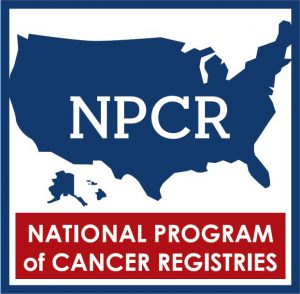Cancer Registry Data: In the Clouds
Posted on by
CDC Division of Cancer Prevention and Control
Cancer Surveillance Branch Chief
Technology has come a long way in recent years. With one click we can have items at our doorstep within days or even hours! We can catch a ride to the airport, keep in touch with friends and family on social networks, and use Internet search engines for movie trivia instead of our memories. A lot of technological advancements add to fun and convenience, but technological advancements in cancer registry data can affect lives.
What Is the National Program of Cancer Registries?
CDC’s National Program of Cancer Registries (NPCR) coordinates the collection and verification of nearly all reportable cancer cases in the United States. With the help of NPCR, each year information on more than 1.67 million new cancer cases are reported to CDC through cancer registries in 46 states, territories, and the District of Columbia. NPCR’s goal is to provide cancer data needed to measure progress and target action to prevent and control cancer.
Solution Requires Modernization
Traditionally, cancer registry data come from manually reviewing the notes in medical records during the evaluation and treatment of patients, abstracting the most important components, and repackaging the data into one cancer case record. The challenge is that there are so many reporting sources and it becomes complicated to bring together these data while maintaining completeness and accuracy. The diagnosis of most cancers in the United States starts with a pathology report that describes cells and type of cancer. Today, pathology reports are increasingly electronic (ePath). By obtaining this ePath reporting first, this could be one way to increase the speed to near real-time cancer reporting.

Cloud-Based Data Capture and Sharing
The latest technology is cloud-based computing, which stores data and programs over the Internet. NPCR is partnering with Quest Diagnostics (a national pathology laboratory), the Association of Public Health Laboratories (APHL), and three central cancer registries (California, Louisiana, and Nevada) to use cloud-based computing and electronic messaging services to effectively gather ePath data for central cancer registries. Over the past decade, NPCR has worked with individual laboratories to implement standardized ePath reporting. Central cancer registries had to set up secure data connections with each laboratory and manage each one. Quest Diagnostics sends all pathology data to APHL, and then these data get distributed by APHL to the correct central cancer registry.
This innovative electronic reporting project could lead to several possibilities:
- A foundation for other pathology laboratories to send ePath data to central cancer registries using cloud-based computing.
- A single portal for all laboratory reporting.
- Access to electronic cancer data received from physician electronic health records and hospitals.
As data are available, cancer planners and researchers can use it to improve cancer prevention, control, and treatment.
We use technology to expand our knowledge base in so many arenas of our lives now. Technological advancements on the back end can make complex ideas easy to understand and actionable. NPCR is striving to achieve the same goal with cancer data. The faster we receive data, the faster we can connect people to the care and support they may need.
One comment on “Cancer Registry Data: In the Clouds”
Comments listed below are posted by individuals not associated with CDC, unless otherwise stated. These comments do not represent the official views of CDC, and CDC does not guarantee that any information posted by individuals on this site is correct, and disclaims any liability for any loss or damage resulting from reliance on any such information. Read more about our comment policy ».


Hello! do you have any data about COVID 19 and its impact (infections and deaths) of people living with cancer.
Aida